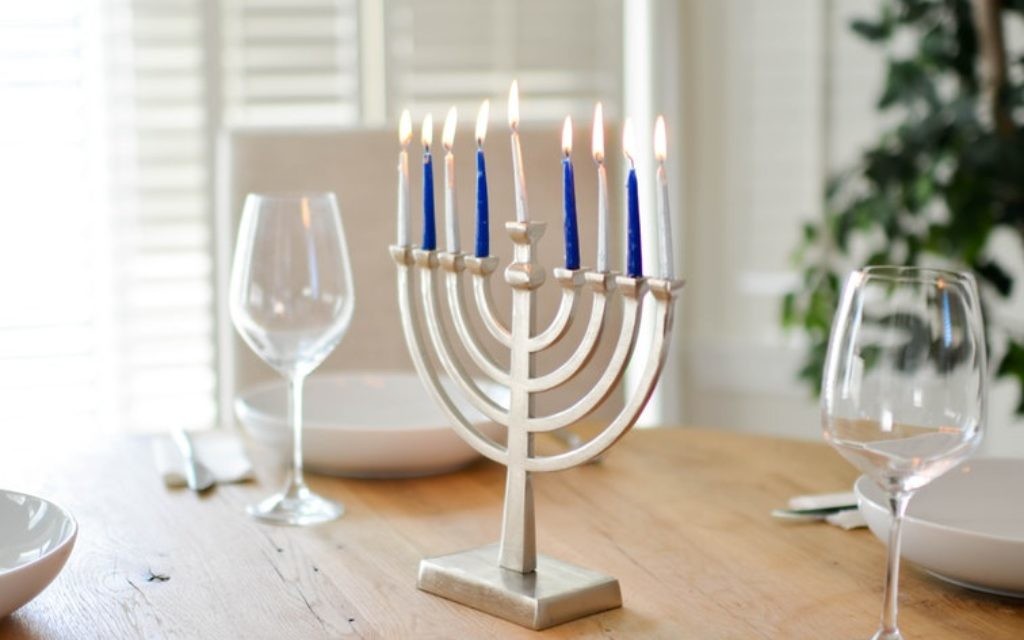The True Miracle of Chanukah
A wonder is the highest level of miracle but occurs within the framework of nature.
Many prayer books have a paragraph to recite after lighting the Chanukah menorah. It praises G-d for the different types of miracles performed during the original Chanukah story and refers to “salvations,” “miracles” and “wonders.” But what were the specific miracles of Chanukah?
First, we must understand each type of miracle to match it up with an event in the Chanukah story. The event that is the greatest type of miracle is the miracle of Chanukah.
A salvation is an event in which two equal forces compete, and the good guys win. This is the lowest level of miracle. The second level, which is called a miracle, is an event that is counter to nature; it is how we understand the term in everyday, modern language.
Get The AJT Newsletter by email and never miss our top stories Free Sign Up
A wonder is the highest level of miracle but occurs within the framework of nature. Contrary to a salvation, which also occurs within nature, a wonder did not have to occur at all; the fact that it did occur is why this is the highest level of miracle.
Now to match this up with the events in the Chanukah story.
When Matisyahu and his sons killed the Greek army unit at Modin, it was a salvation level of miracle. There were two equal forces fighting, but Matisyahu’s side won.
The Jewish military victory over the Greeks was the middle level of miracle. The Greeks were superior militarily and should have defeated the Jews, but the Jews won — thus, a miracle.
So what was the wonder? It cannot be one day of oil burning for eight days in the Temple’s seven-branch menorah because that was beyond nature; wonders occur within nature.
Erroneously, Hebrew school curriculum writers, teachers and even most rabbis have chosen to highlight the oil as the miracle of Chanukah. It makes for a climactic story, but it was one of the second-level miracles.
The wonder-level miracle was the finding of a single jar of oil that had not been opened by the Greeks.
That may sound anti-climactic at first, but once you know some of the key historical details of Chanukah and understand the cause and effect of how Jews do mitzvot and how G-d does miracles, it will make sense.
The Greeks were not opposed to Jewish culture and practices as long as the Jews did not claim that their practices were commanded by G-d.
According to Jewish law, the oil used in the Temple’s menorah had to be pure, but in a crisis the use of contaminated oil was permitted. The Greeks knew this, so they opened all the containers and touched the oil in each. (Our Hebrew school teacher’s telling us that the Greeks destroyed all the oil in the Temple’s reserves was not true.)
The Greeks didn’t mind that a menorah was lighted in the Temple; it just had to have a “Greek touch.”
According to Kabbalah, the cause and effect of the Jews deserving each type of miracle is as follows:
- Jews merit salvation-level miracles by fulfilling G-d’swill. For example, the Shema states, “If you will walk in My statutes and keep My commandments … I will give you rains in their season, and the land shall yield its produce.” In sum, when a Jew keeps the mitzvot, G-d does miracles within the natural functioning of the world.
- A miracle-level miracle is merited only if Jews go beyond what G-d commanded and do the mitzvot with hiddur (enhancement and beautification). For example, using a beautiful Kiddush cup instead of just a glass, buying a more expensive lulav and etrog, or using an oil menorah at Chanukah instead of one with candles. When a Jew goes beyond what is required, G-d goes beyond nature in doing miracles.
- Wonder-level miracles are merited by Jews who do mitzvot with mesirat nefesh, which means self-sacrificebut is much more. Mesirat nefesh means that a Jew reaches the level of surrendering his personal identity to viewing that his purpose is to live a life of performing mitzvot, no matter the challenges. This is an internal mode that is not obvious to an onlooker; thus, wonder-level miracles do not violate nature but occur within the natural workings of the world.
Because the non-Hellenized Jews were operating on the level of performing mitzvot not only with hiddur, but also with mesirat nefesh, it makes sense that G-d rewarded them with the highest level of miracle, a wonder, so that they could light the menorah in the best way, which was with pure oil.
Thus, finding one jar of oil that the Greeks missed is the miracle of Chanukah.
A practical lesson: According to the theology of Kabbalah, there is a correlation between how we do mitzvot and the degree to which G-d performs miracles for us. Thus, if we want G-d to do different types of miracles for us, we should evaluate how we are doing mitzvot: normally, with hiddur or with mesirat nefesh. Happy Chanukah.
Rabbi Joel E. Hoffman is a science and special education teacher at a public school in the Boston area. This d’var Torah is based a talk by the seventh Lubavitcher rebbe, Rabbi Menachem M. Schneerson.





comments